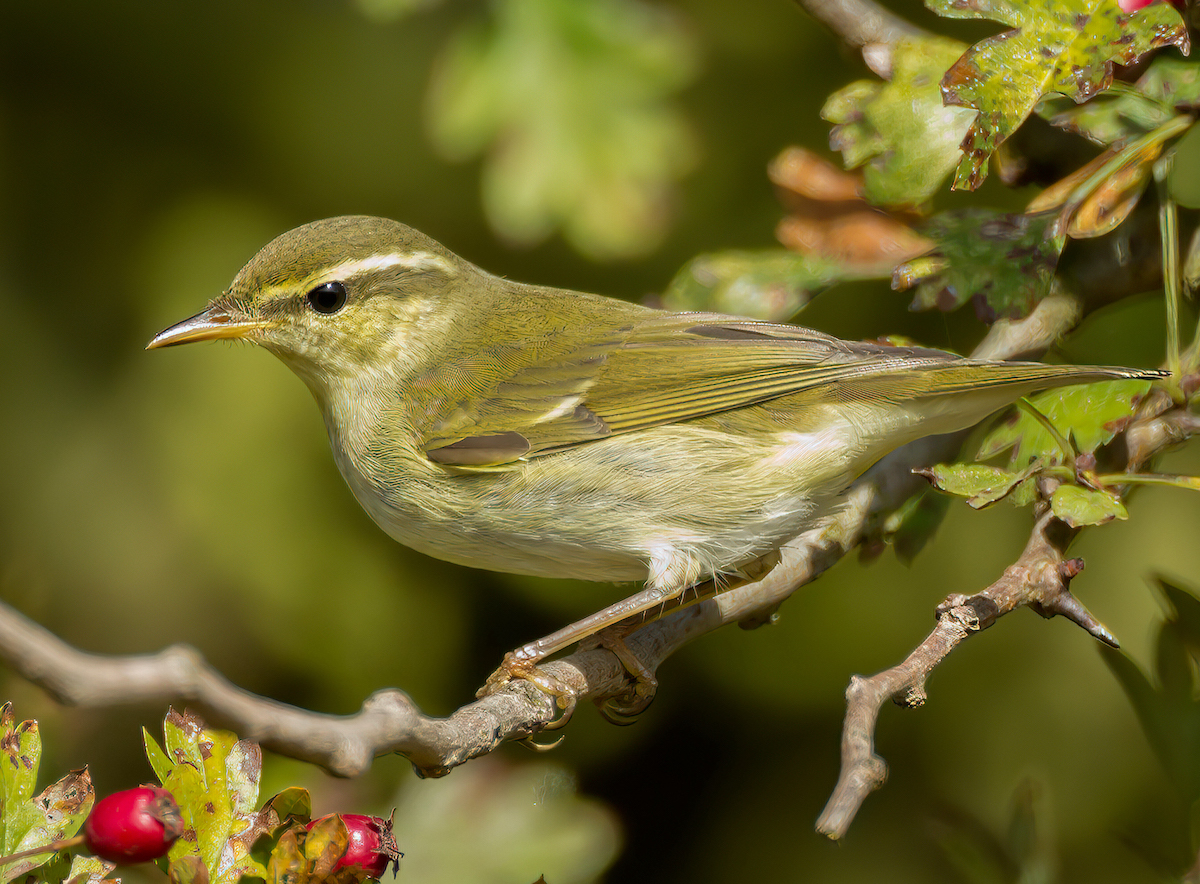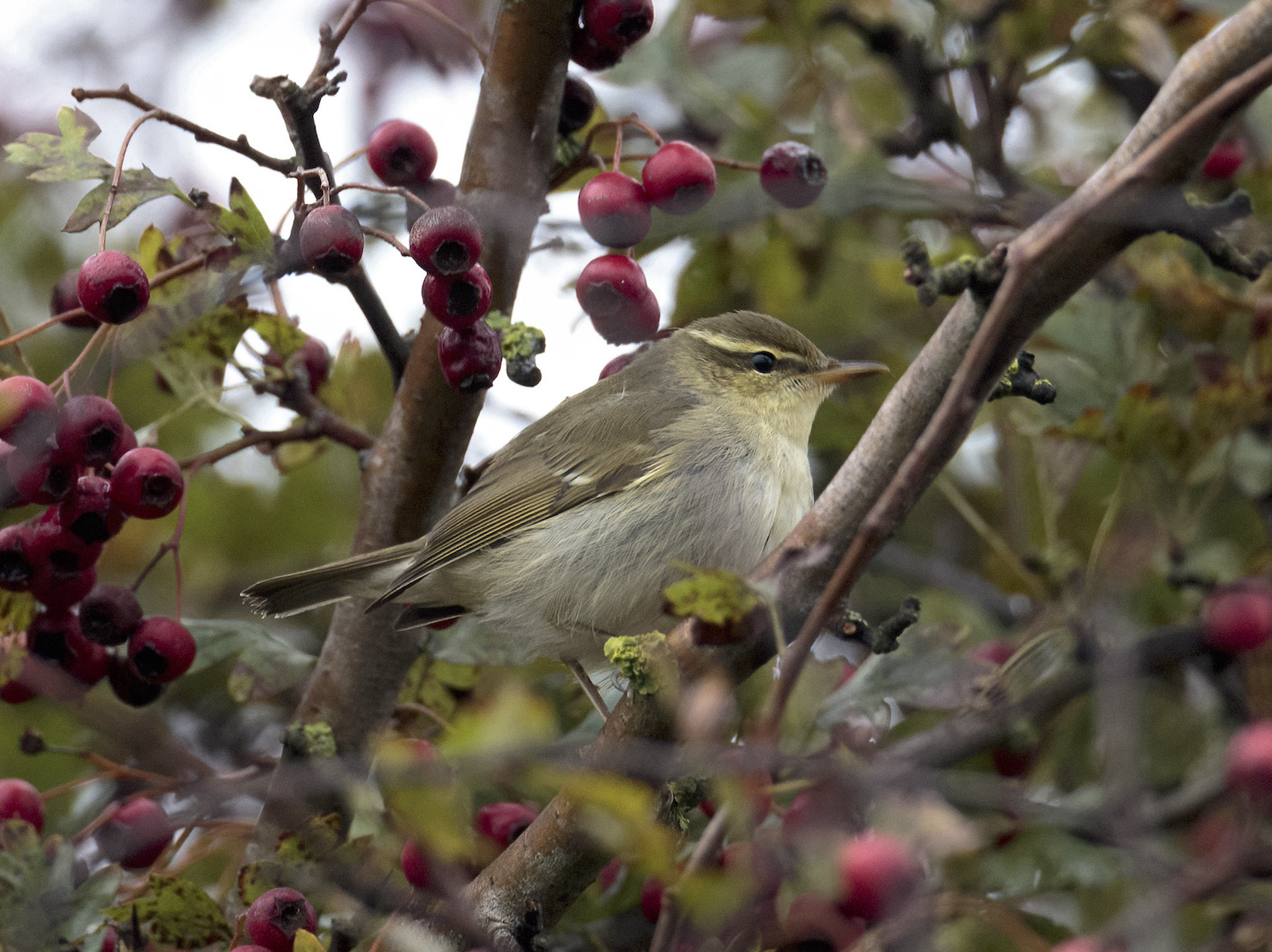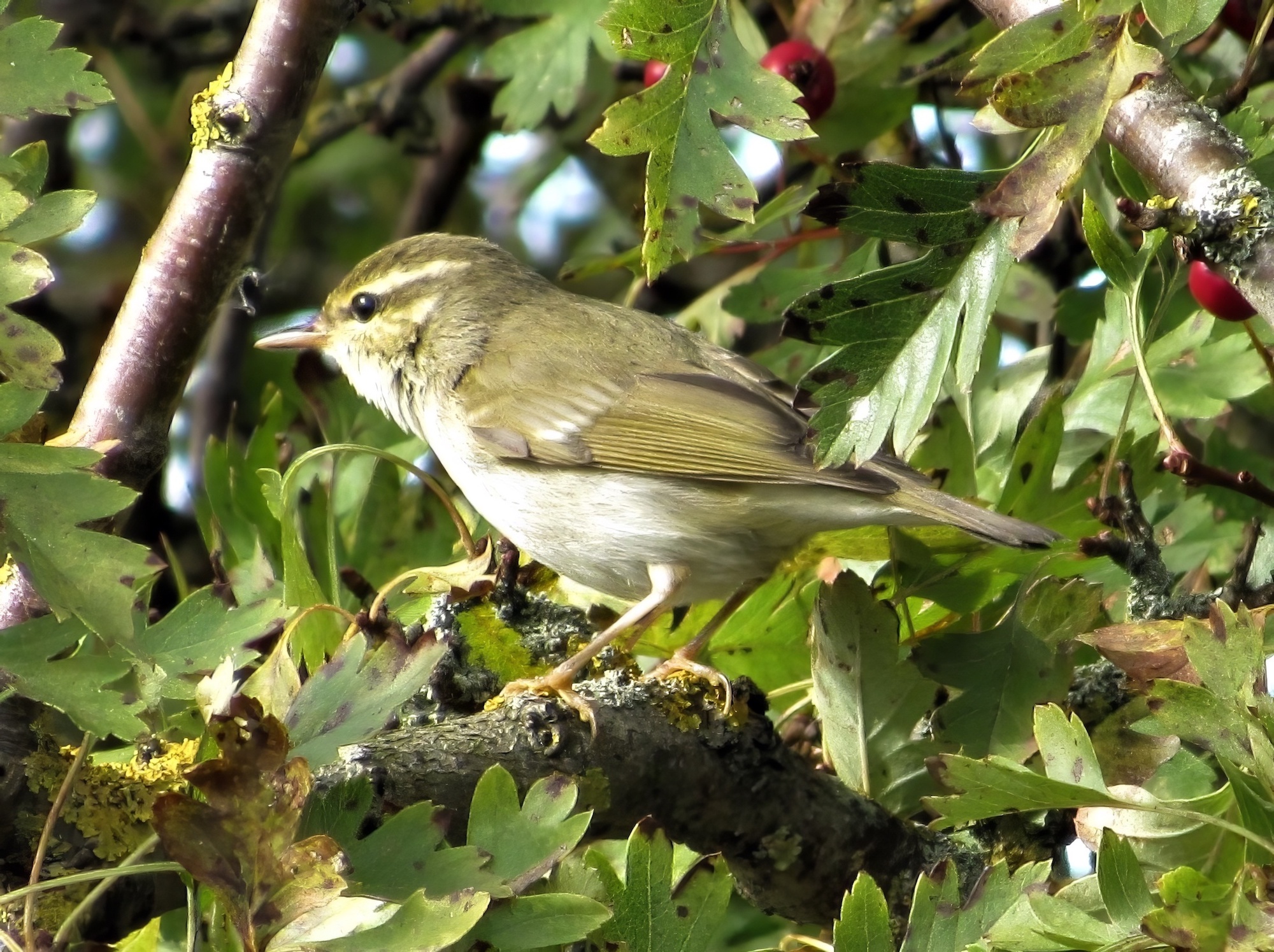Arctic Warbler Phylloscopus borealis



One shot by Caton Haigh, when it was known as Eversmann's Warbler, at North Cotes on October 24th, 1932 was the first county record and 11th for the UK:
EVERSMANN'S WARBLER (Phylloscopus b. borealis).—While hunting the old shelter hedges near the coast at North Cotes for Woodcock on October 24th, 1932, I detected a small leaf Warbler flying along in front of the beater and keeping close to the foot of the hedge. As this date was late for a Chiffchaff or Willow-Wren, I paid special attention to the bird and soon noticed that it had a conspicuous white eyestripe. I shot the bird, which was unfortunately much shattered, but Gunn of Norwich contrived to make a recognizable skin of it. It was forwarded to Mr. H. F. Witherby, who very kindly identified it for me as Eversmann's Warbler. It is the first Lincolnshire and the eleventh British example. There was a certain amount of migration taking place, Hooded Crows, Rooks, Fieldfares, Larks and Lapwings travelling to NW, and I noticed Great Tits, Wrens and Tree-Sparrows in the hedges. The wind was light NW and the weather was fine (© British Birds).
Fortunately, times have changed, and the succeeding 10 records were either well-documented sight records (7) or were trapped and ringed (3). All were recorded between September 3rd and October 24th. A contentious bird trapped in May 1983 at Gibraltar Point and submitted as this species was assessed at length by BBRC but finally considered not proven and is not included here. Between 1950 and 2018 there were 398 British records averaging about nine per year; BBRC ceased to consider this species after 2018.
| Site | First date | Last date | Count | Notes |
| North Cotes | 24/10/1932 | 1 | Shot | |
| Gibraltar Point NNR | 19/09/1976 | 27/09/1976 | 1 | |
| Humberston | 10/10/1978 | 1 | ||
| Saltfleetby-Theddlethorpe NNR | 10/09/1985 | 1 | Trapped, 1CY bird | |
| Gibraltar Point NNR | 20/09/1986 | 21/09/1986 | 1 | Trapped, 1CY bird |
| Tetney | 26/09/1986 | 29/09/1986 | 1 | 1CY bird |
| Donna Nook | 03/09/1995 | 1 | ||
| Saltfleetby-Theddlethorpe NNR | 18/09/1985 | 1 | ||
| Donna Nook | 11/10/2014 | 14/10/2014 | 1 | |
| Gibraltar Point NNR | 11/10/2018 | 1 | ||
| Saltfleetby-Theddlethorpe NNR | 05/10/2019 | 1 | Trapped, 1CY bird |
Finder’s report: Arctic Warbler at Gibraltar Point, September 19th, 1976, second county record.
by J. P. Shaughnessy.
Note: account based on the original BBRC submission. This was the second county record after the first in 1932, which was shot. The RC (BBRC) report for 1976 noted that there was also an Arctic Warbler on Cape Clear Island, Co. Cork, September 27th which was only the fourth for Ireland, and that the three British records in 1976 was an above-average showing. A trend to later autumn occurrences was now obvious too.
Circumstances
At 10.30 hr. while searching the Syke’s Farm area of Gibraltar Point, I discovered a small group of Phylloscopus warblers in some young Sycamore trees (25 ft. high). These proved to be all Willow Warblers and Chiffchaffs, but I had a brief sighting of another warbler which appeared to have very pale underparts when compared to the other Phylloscopus warblers, and darkish upperparts. Although the light was poor (observing upwards into sun’s glare) it was apparent that the bird differed from the other warblers in three ways: (a) a very prominent supercilium, (b) a wing bar and (c) very pale legs. No conclusive features could be determined as the bird disappeared into a clump of trees (and could not be found again) after about 30 seconds. During this period the bird was only in full view very briefly, due to its active behaviour, constantly moving around in the high branches of the Sycamores.
A further search at 11.15 hr. proved successful and the suspected Arctic Warbler was found in the same trees. The previous data was confirmed, and the bird was seen (in company of several other Phylloscopus warblers) at a range of c. 30 ft. and noted to be about 1-2 cm. longer than the other warblers but perhaps slimmer. The bird soon escaped observation (one minute) but had been seen well enough and in good light to indicate that it was an Arctic Warbler. Being unable to find the bird readily I then went to the Field Station and gave my description verbally to George Evans (Chief Warden). He immediately suggested Arctic Warbler. Fran Evans then went to look for the bird (c. 13.00 hr.) and when I returned to the site at 15.00 hr. I met her leaving. She also had identified the bird as being Arctic Warbler. I found the bird easily and was able to take a full field description in a variety of lights, distances, etc.
Description
- Striking features of the bird – pale greyish white underparts, brownish green upperparts. Prominent yellowish superciliary stripe. Yellowish wing bar at junction of primaries and primary coverts extending across full width of closed wing. Legs very pale straw colour.
- Shape of bird and behaviour – seen on several occasions in the same field of view (at 20 ft.) in the company of a Willow Warbler and various Willow/Chiffs and a detailed comparison was obtained. The bird was slightly larger than Willow Warbler but appeared to be more slender, especially in the region of the head and upper body. The bill appeared longer than that of Willow Warbler although was not thick. The bird rarely came down to below a height of 15 ft. and was usually found in the outer regions of a Sycamore tree. It moved rapidly round the tree, and constantly flicked its wings very rapidly, more so than the Willow/Chiffs. This darting activity enhanced the slim appearance of the birds, the bill always being held straight forward as if constantly reaching for something.
- Detailed plumage characteristics:
- Head – long, thin yellowish supercilium extending right round behind head and almost meeting the one from the other side. This contrasted strongly in all lights with the top of the head region. The colour of the crown was quite a dark, greenish brown in dull light and a medium greenish-brown when in direct sunlight. Supercilium contrasted very strongly with the dark brownish black eye stripe which was quite broad and extended well behind the eye. The lower part of the eye stripe was lighter as it merged into the cheek which was greenish brown. The bill was long but not noticeably thick. It appeared to be dark in colour, darker than that of the Willow/Chiffs.
- Underparts – throat a dirty white. Breast and rest of underparts very slightly greyer but prominently whitish in all lights.
- Upperparts – generally greenish brown. Lighter than the crown but not contrasting with it. Darker and more brownish towards the tail, which was dark brown tinged with green.
- Wings – more or less the same greenish brown but with a well-defined wing bar at the junction of the primaries and coverts. The wing bar was yellowish in colour. The second wing bar was noticeable only in optimal conditions. It seemed to be slightly broader, much less well defined but still yellowish when compared with the main wing bar. There also seemed to be a yellowish patch near to the carpal region of the wing. The wing seemed a trifle scruffy in this area of the lower part of the wing bar.
- Legs – very pale in all lights, much paler than those of Willow Warbler seen next to the bird. Also seemed to be slightly more substantial than those of Willow Warbler.
- Call – On September 20th it was heard to call many times, a harsh ‘zeep…zeep…zeep…’, which had a grating quality but also with some pleasant liquid/metallic quality. Spotted Flycatchers calling nearby were available for comparison, and in fact the Arctic Warbler was like an extended, less harsh call of this species. Also called a ‘zick…zick…zick…’ frequently.
References
British Birds Rarities Committee: List changes, 1st January 2019. Arctic Warbler to be assessed by county records committees. https://www.bbrc.org.uk/1907
Caton Haigh., G. H. (1933). Rare birds in Lincolnshire. British Birds 26 (8): 253.
O'Sullivan, J. and the Rarities Committee (1977). Report on rare birds in Great Britain in 1976. British Birds 70 (10): 405-453.
(Updated with reference to the new Birds of Lincolnshire (2021) November 2022)

